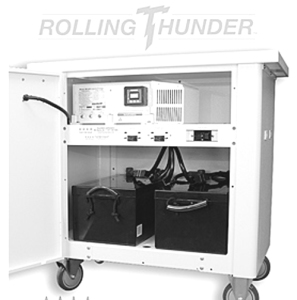 I HAVE A COUPLE OF DATA POINTS that I track on a personal level. I watch for new installations of solar panels in my neighborhood, and I look to make sightings of electric bicycles. I’m happy to see solar panels blossoming all around me. I’m not happy, however, to see that some installers just cobble the electrical conduit from the panels over the roof and down to wherever the electrical panel is in the home, usually the garage. It’s a pet peeve of mine since my solar panel installer properly ran the conduit through my attic. However, my alma mater, AT&T, just stapled U-Verse wire on the outside of my home from my phone connection box to my study. Goodness, expedience does sometimes result in a less than professional look.
I HAVE A COUPLE OF DATA POINTS that I track on a personal level. I watch for new installations of solar panels in my neighborhood, and I look to make sightings of electric bicycles. I’m happy to see solar panels blossoming all around me. I’m not happy, however, to see that some installers just cobble the electrical conduit from the panels over the roof and down to wherever the electrical panel is in the home, usually the garage. It’s a pet peeve of mine since my solar panel installer properly ran the conduit through my attic. However, my alma mater, AT&T, just stapled U-Verse wire on the outside of my home from my phone connection box to my study. Goodness, expedience does sometimes result in a less than professional look.
After a year and a half of solar production data, I asked Diablo Solar (my choice for solar installation) whether I should add another panel to my system. With the “true up” from the excess energy I produced for Net Metering and what I needed when the solar panels weren’t producing, I found I owed PG&E something like $25 last year. Naturally, I want to be net zero. After looking at my electricity usage, I was told that my system was producing electricity at 114 percent of capacity and that because of the additional cost of adding one more solar panel, it wouldn’t be worth it at this time to add the panel.
Blackouts
All this got me thinking about emergency power backup. My current solar system has an inverter that I can switch to during a electricity outage occurring during the day. I have an outlet that I can reach by extension cord to plug in my refrigerator. With the recent power outages we experienced in December — and a brief one just this past Saturday — I was wondering what a solar-powered electric emergency power backup system might look like, and what would it cost.
‘Rolling Thunder’
If you do an Internet search on emergency battery backup, you will find, as I did, there are thousands of links. One interesting site touts a product called “Rolling Thunder.”
The “Rolling Thunder” system has nothing to do with motorcycles or loud noises. It is an interesting concept that places an energy inverter and two sealed, heavy duty batteries in a rolling cart tricked out with input and output plugs, enough to keep things running for a short time in a home or a small business office.I had no idea how to calculate the kind of system that would be useful for me. I used the company’s comprehensive Appliance Electrical Consumption Table to plug in some numbers and found I would not need a very large system to run a refrigerator, some 60-watt lights, my computer, a small LED TV and a heater for a couple of hours in the evening. In fact, I would have power left over to wash clothes and use the cooktop or microwave. For short outages, this wouldn’t be necessary, but during an emergency of a longer duration it would be very comforting and useful to have that backup. I could also pass along my old Primus camp stove.
I had no idea of the range of sources for backup power. In fact, Solar City, the company that puts leased solar panels on homes, has partnered with Tesla to provide their customers the option to have an energy storage system “about the size of a solar power inverter, and . . . mounted on the wall in your garage or near your electrical panel.”
I initially thought that if I wanted an emergency battery power system I would need to buy another solar panel to charge the system . . . which I still might consider doing in case I want to put the system to use for emergency response needs at a different location than my home. However, I could easily charge the battery backup from my own electrical outlets during the day when the sun is shining on my existing solar panels.
I noted, too, that it might even be useful to run small outdoor devices, like fountains or sump pumps, using a small system that coupled a solar panel plugged into a battery and the pump connected to the battery. This is an idea that needs further investigation.
Back to bicycles
As to my second data point, bicycles, I was most happy to learn from Doug Snyder of California e-bikes that he had a tremendous year in sales in 2014. As Rory and Jesse (my Scotties) were walking me up West Second Street, my neighbor Dan called out to me from the ease and comfort of his new e-bike. He was most pleased to say he had easily made the trip to Martinez and beyond on his new bike. Then, last Friday, I spotted two riders on their (serious looking) e-bikes heading up First Street.
Whether on an electric bicycle or bicycle or on foot, it surely is great to see people out enjoying Benicia!
Learn more
• California-ebike.com
• Diablosolar.com
• Energy Consumption Guides: visualization.geblogs.com/visualization/appliances/ or wisconsinpublicservice.com/home/electric_calculator.aspx
• Wheelsinmotionbenicia.com
• Wholesalesolar.com
Constance Beutel is the former chair of Benicia’s Community Sustainability Commission. She is a university professor and videographer and holds a doctorate from the University of San Francisco.







Leave a Reply